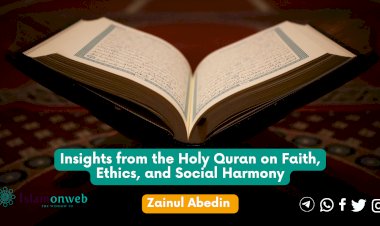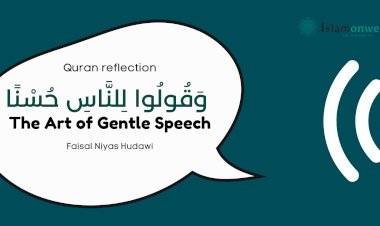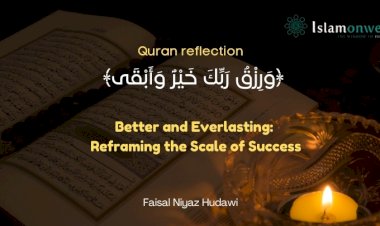Bhai Girish Chandra Sen’s (Maulvi Bhai) Contribution to Islamic Heritage (Part 2)
BHAI GIRISH CHANDRA SEN
Bhai Girish Chandra Sen (1834-1910), a Bengali theologian, translator and polyglot, was a Brahmo Samaj[1] missionary and commonly hailed for his first-ever Bengali translation of the Holy Quran in 1886.[2] He is better known as “Maulvi Bhai” Girish Chandra Sen for his knowledge and contributions to Islam.
He studied Persian and Sanskrit during his time in college. He was introduced into Brahminism in 1871 and took the vows while travelling around North India, South India, and Brahmadesh under the guidance of Keshav Chandra Sen and Vijaykrishna Goswami. He committed to studying Islamic literature with Guru Keshav Chandra Sen's support and guidance. He travelled to Lucknow in 1876 to study Arabic and Islamic theology at this time.[3]
The first-ever book Girish Chandra Sen pen down was a biography called Brahmmoyi Chorito, published in 1869. The second book was the translation of some stories from the vernacular Persian poet Sheikh Saadi’s masterpiece, Gulistān[4], published in 1871 from Girish Press in Dhaka. Then he translated the book Akseer-e Hidayat of Imam Abu Hamid Muhammad ibn Muhammad al-Ghazali and published it, namely Dhormo-Bondhu in 1876 from the Calcutta Brahma Society. Another important work was Tattvaratnamala in 1907, which contains moral lessons and words of wisdom in the form of short tales from two famous Persian books: Sheikh Fariduddin Attar's Mantiq Tayeb and Maulana Jalaluddin Rumi's Masnavi Sharif.
The most important of Bhai Girish Chandra Sen's missionary works was the Bengali translation of Tazkirat al-Awliya[5] and the publication of a series of works entitled 'Tapasmala'. The narration of total of 96 Muslim dervishes has been translated and compiled into six massive volumes in this book.
After becoming fairly established as a translator, he began translating the Qur'an. He gradually completed this translation work in a total of 12 volumes. After the two volumes of Tapasmala, the first volume of the Quran was published on 12 December 1881. Afraid of the reactions of the Muslims, Bhai Girish kept the translator’s name secret during the publication of the first volume. The book only carried the name of the publisher and printer Tarinecharan Biswas. In order to make it handy and let people experience the work’s veracity, this volume of 32 pages was priced at just four annas.[6] But Bhai Girish’s apprehension proved utterly wrong when two Muslim communities sent letters to the Brahmo Samaj praising the anonymous translator for carrying out this piece of translation of the Holy Quran. The entire Qur'an was published together in 1886. In the complete volume, Maulana Akram Khan[7] wrote a complimentary introduction to the fourth edition of the Quran, translated by Bhai Girish Chandra Sen.
After the Quran, his other major work is the translation of Hadith. He published a translation of about half of the Mishkat Sharif [8], under the title Hadith-East Division in 1892 as the first volume and Hadith-North Division in 1908 as the last volume. His biographies are also basically equivalent to 'Tapasmala'. The first part of 'Mahapurusha Charit' was published in 1883. The first part contained the biographies of the Prophet Ibrahim (عليه السلام) and the Prophet Dawood (عليه السلام). The second part was the biography of the Prophet Musa (عليه السلام) followed by the third part, which contains the biography of the Prophet Dawood (عليه السلام). Another major book in the list of biographies is Mahapurush Muhammad (3 volumes), followed by the Biography of Imam Hasan and Hossain in 1911, and many more.[9]
But most of these books are not well accessible. Putting forth these contributions to the field of translation from the Islamic heritage, Maulvi Bhai Girish Chandra Sen passed away on 15 August 1910.
Features of Translation
By the passage of time, there came translation versions with slight changes of meanings and descriptions as per need. After around 137 years, this current version of the translation carries the mentioned features below:
(1) As of the translation, it starts with a declaimer in the index that all the names of surahs in the Quran are the word from the surah itself except Surah Fatiha and Surah Ikhlas which do not have any word origin in their name. Following the names of the Surah, there is also a translation of the names of the Surah, which helps the reader get the meanings of the Surah too.
(2) After these, there is a description of what the Quran actually calls for. So, almost all the contents, like treatment of the orphan or fatherless, repentance or forgiveness, the life and hereafter, and many more have been mentioned along with its counting for how many times they are spoken about.
(3) Moving forward, there is a description of the disciplines of a reader of the Quran. Some of the basic principles the reader would have to observe while or before reading the Quran are brushing the teeth, doing ablution, reciting the Quran with melody, facing the qibla, etc. have been mentioned here.
(4) As a part of bibliography, a detailed list of books on the Qur'an and related works, translated and published in various world languages, Eastern and Western, have been attached.
(9) There is a subject-wise verse reference to find where any subject is mentioned in the vast premises of the Quran. Therefore, from the alphabetical index, any reader can know the instructions about any subject within minutes. Let’s take someone who wants to know about orphan, for instance, he would look for the word Orphan in the subject reference. Though the serial number of the surah and the number of the verses or sentences of that surah are given in parentheses, he would find it quite convenient to look for the word and know its essence.
Endnotes:
[1] Sen, Girish Chandra. Quran Shareef. 4 ed., vol. 1, Kolkata, Haraf Publications, 2015. 1 vols.
[2] Fatani, Afnan (2006). "Translation and the Qurʻan". In Leaman, Oliver (ed.). The Qurʻan: an encyclopedia. Great Britain: Routledge. pp. 657–669.
[3] Ali, Sher. “South Asian Quran Commentaries and Translations: A Preliminary Intellectual History.” 1 ed., vol. 5, ReOrient, 2020, p. 239. Accessed 8 February 2023.
[4] Shaffi, Sajid. “Qur’an Translations in Indian Regional Languages: A Bibliography.” ALIGARH JOURNAL OF QURANIC STUDIES, 1 ed., vol. 1, Aligarh Muslim University, 2018, pp. 143-155. Accessed 8 February 2023.
[5] Rahman, Mizanur. “The History of the Translation of the Holy Quran in Bengali: The Translation Example of Gulam Azad.” International Journal of Social, Political and Economic Research, 1 ed., vol. 1, IJOSPER, 2021, pp. 152-172. 8 vols. Accessed 8 Feb 2023.
[6] Islamic Foundation Bangladesh, translator. Al-Qur'anul Kareem. 36 ed., vol. 1, Dhaka, Islamic Foundation Press, 2007. 1 vols. Accessed 8 February 2023.
[7] Chandpuri, Oliur Rahman. Pobitro Qur'an. 2 ed., vol. 1, New Delhi, Goodwork Books, 2018. 1 vols. Accessed 8 February 2023.
[8] Dey, Amit. “Bengali Translation of The Quran and The Impact of Print Culture on Muslim Society In the Nineteenth Century.” vol. 1, Uniwersytet Wroclawski, 2012, pp. 1299-1315. Accessed 8 February 2023.
[9] Mohanta, Sambaru Chandra (2012). "Sen, Girish Chandra". In Islam, Sirajul (ed.). Banglapedia: National Encyclopedia of Bangladesh (Second ed.). Accessed 8 February 2023.
[1] The social aspect of Brahmoism is known as the Brahmo Samaj, which first developed as a monotheistic reformist movement in the Bengal Renaissance.
[2] Dey, Amit (2012). Bengali Translation Of The Quran And The Impact Of Print Culture On Muslim Society In The Nineteenth Century. University of Calcutta, Department of History. P.1302.
[3] Mohanta, Sambaru Chandra (2012). "Sen, Girish Chandra". In Islam, Sirajul (ed.). Banglapedia: National Encyclopedia of Bangladesh (Second ed.).
[4] Gulistān is a classic of Persian literature and may be its most important prose work. One of the two major compositions by Sa'di, a Persian poet regarded as one of the finest medieval poets, it was written in 1258 CE.
[5] The Persian poet and mystic Fard al-Din 'Aar wrote Tazkirat al-Awliy, a hagiographic anthology of ninety-six Sufi saints and their miracles, between the twelfth and the thirteenth centuries.
[6] Once used in British India, an anna was a unit of currency that was equal to 116 of a rupee. There were four (ancient) Paisas or twelve pies in it (thus there were 192 pies in a rupee). One anna was therefore equal to 6.25 paise when the rupee was decimalized and divided into 100 (new) paise.
[7] Mohammad Akram Khan was a journalist, politician, and Islamic scholar from Bengal. The Azad, the first Bengali newspaper in Dhaka, was founded by him. He was one of the founders of Jamiat Ulama-e-Hind.
[8] Mishkat al-Masabih is a book written by Muhammad al-Khatib al-Tabrizi, in which he collected the texts of the hadiths of the Prophet, then arranged them in the manner of the books of the Jawami.
[9] Abdullah Al Moha, (2018). Girish Chandra Sen. Sahos24.
About the Author: Sirajuddin Shaikhis a PG research scholar at Darul Huda Islamic University, Kerala, India. muhammadsiraju818@gmail.com.
Disclaimer
The views expressed in this article are the author’s own and do not necessarily mirror Islamonweb’s editorial stance.
























Leave A Comment